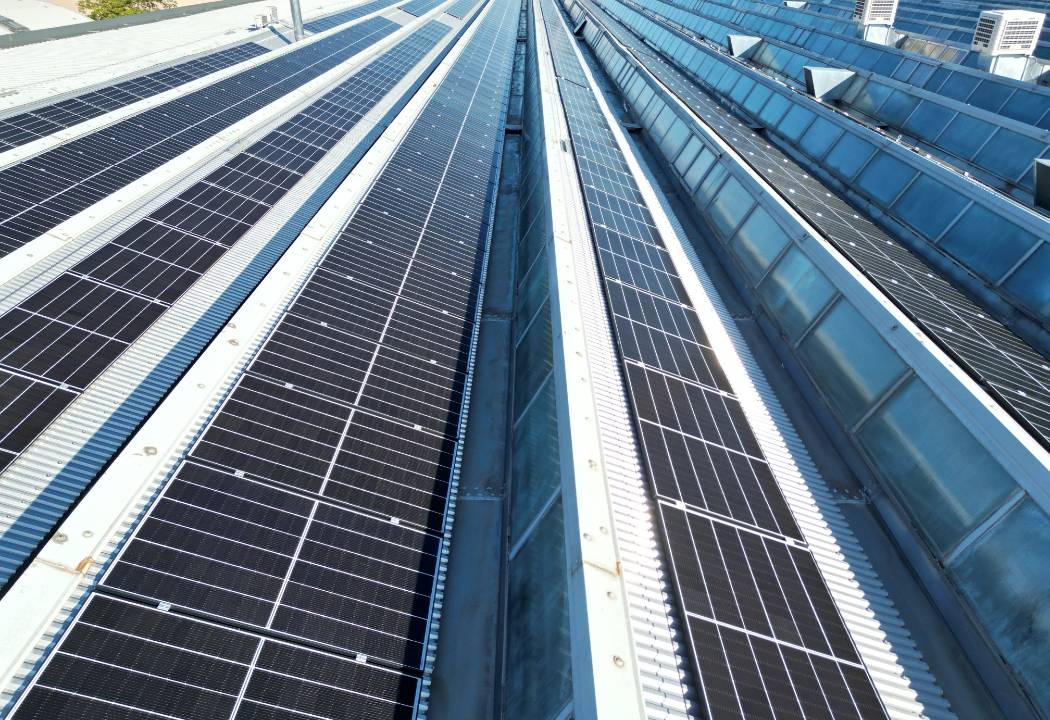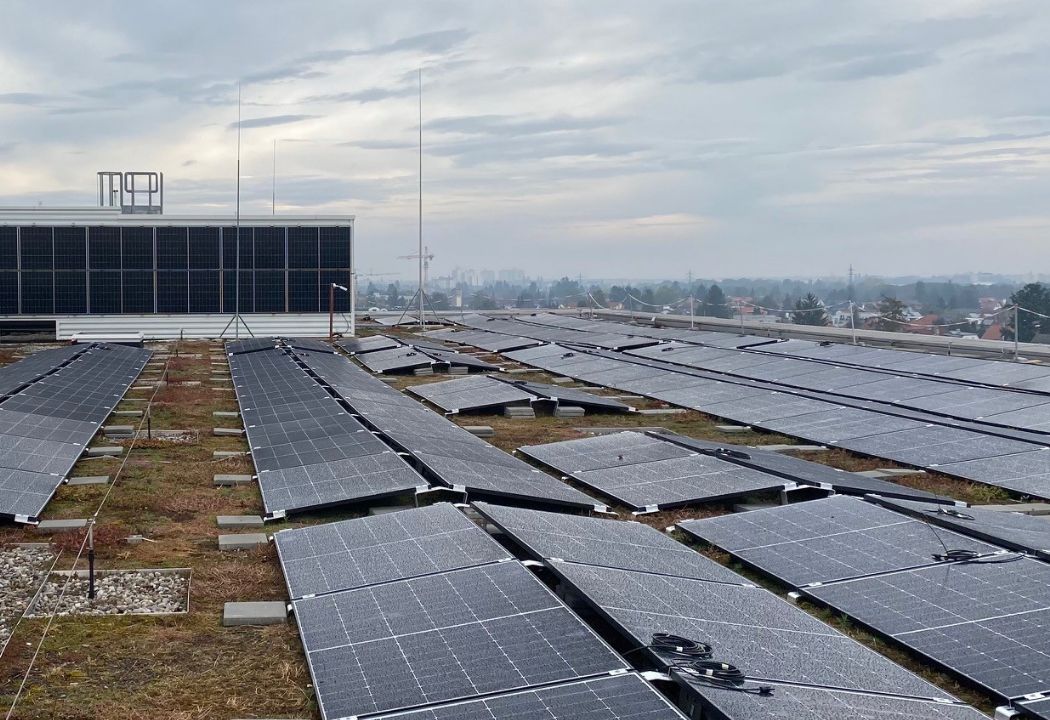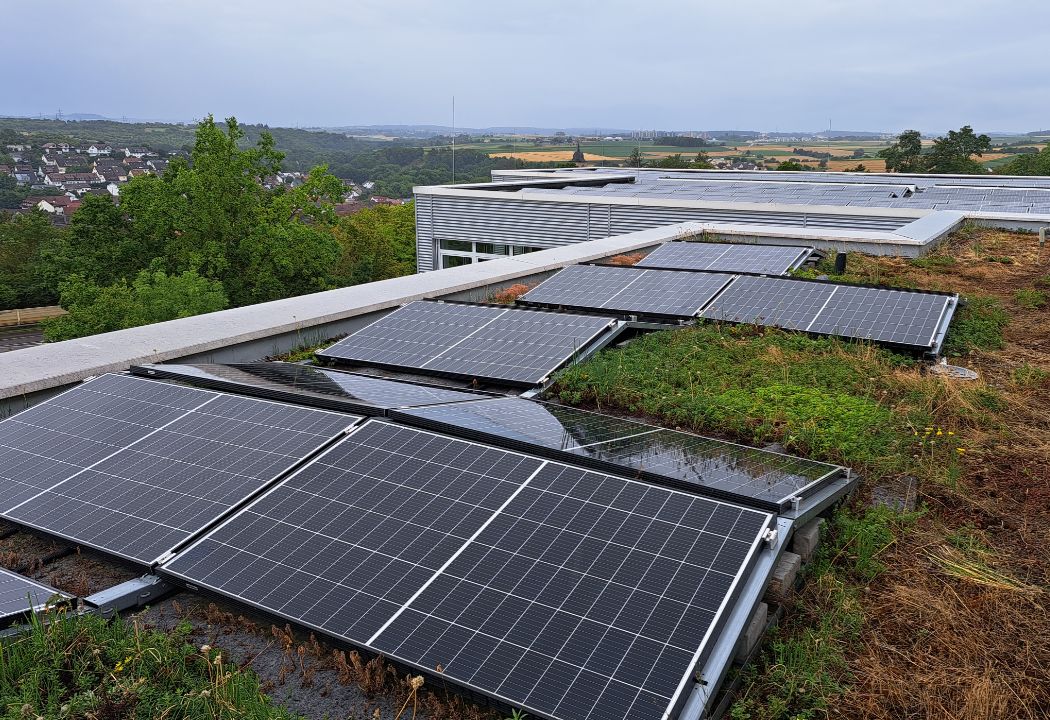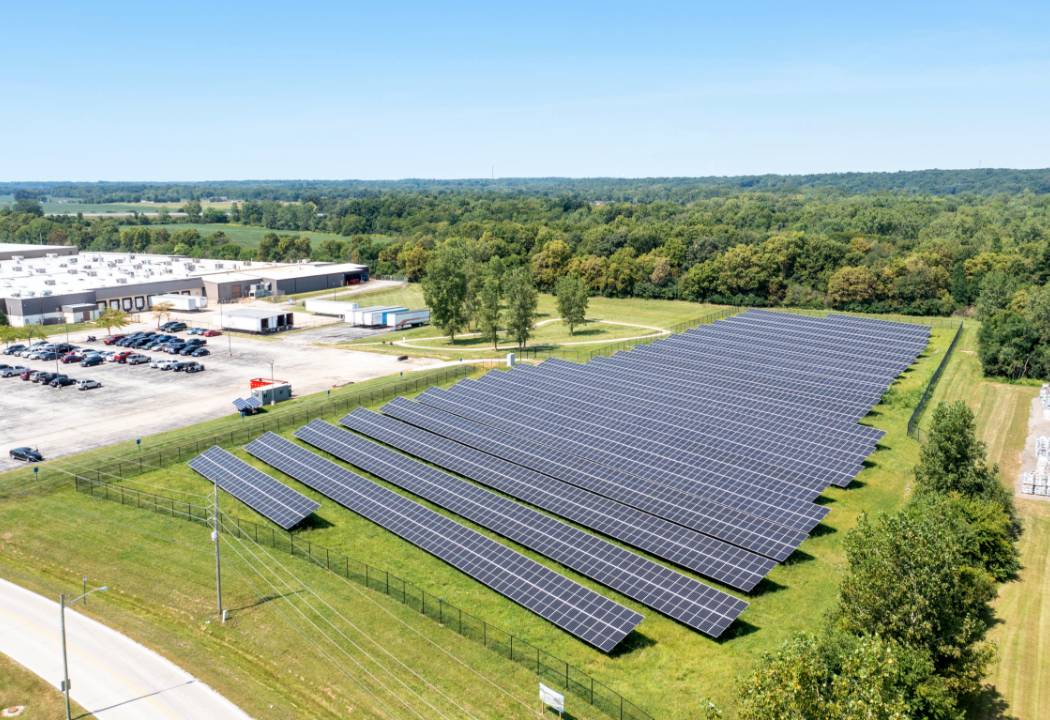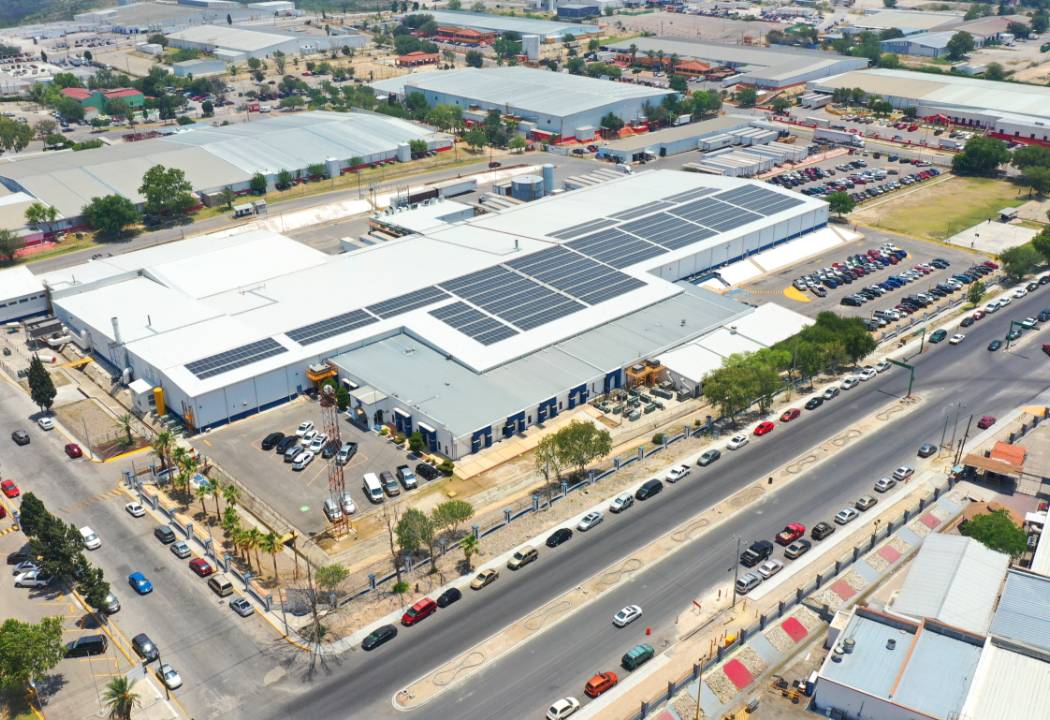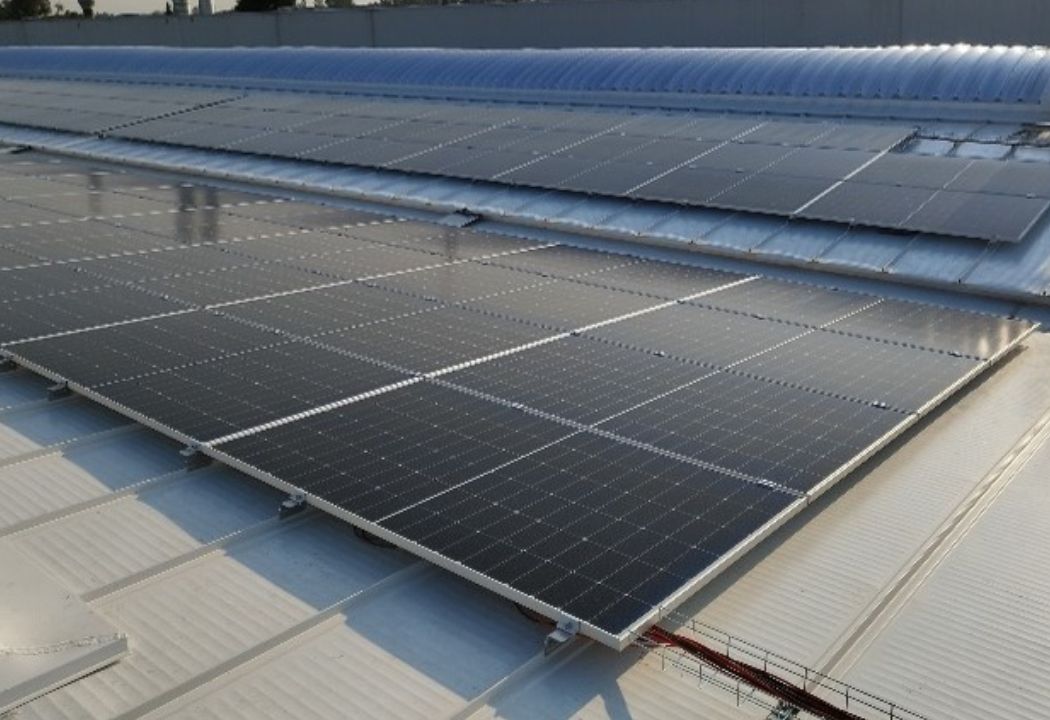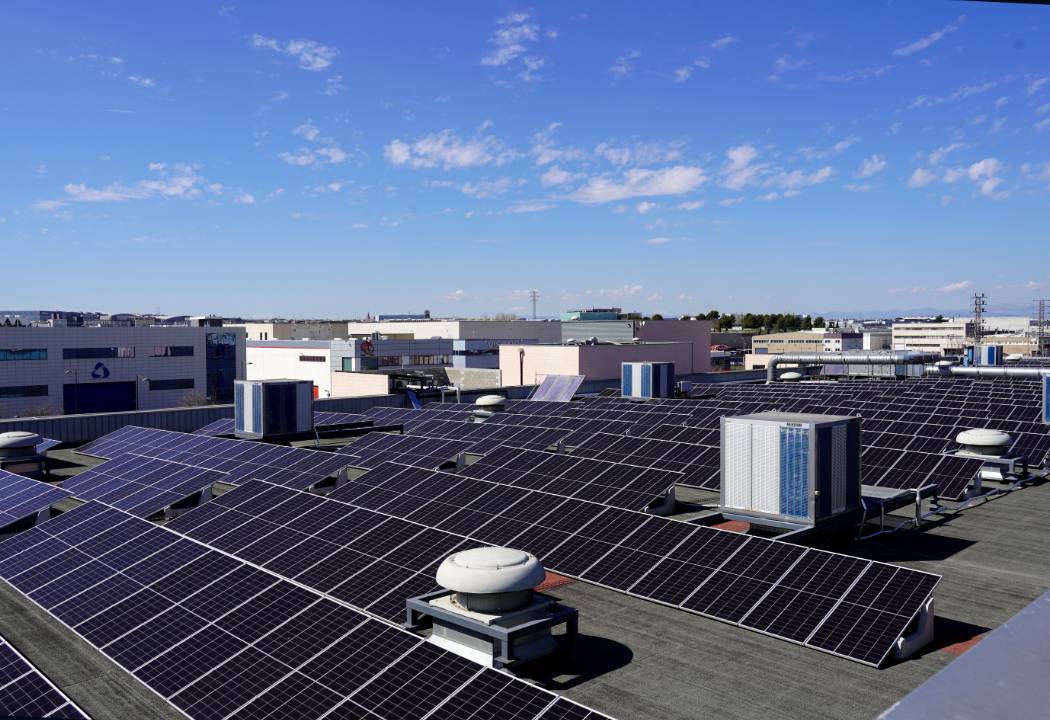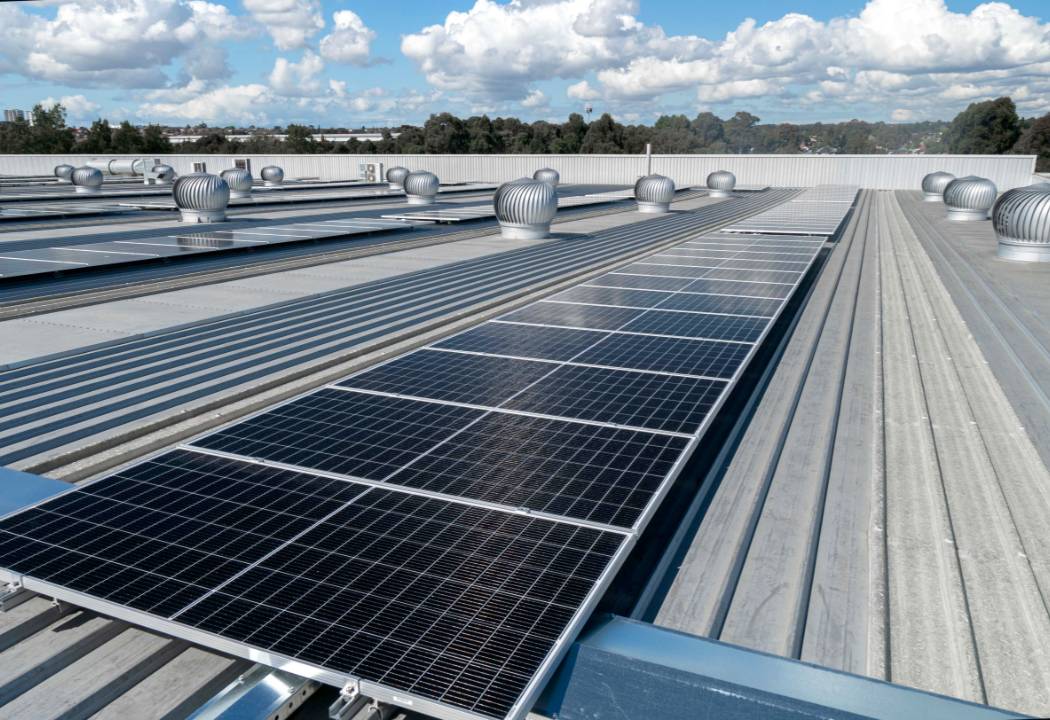Environment
Resource consumption and climate change are major challenges for business and society. With our Climate Strategy 2030, we aim to make a significant reduction in CO2e emissions within our own production sites as well as across our upstream and downstream value chains. Our EcoDesign approach enables us to take aspects of sustainability into account across the entire life cycle of our products. In use, these products in turn promote the safe, efficient, and sustainable mobility of rail and commercial vehicles.
Environmental Management
With comprehensive environmental management, we seek to continuously reduce the environmental impacts that come from our business activities. Clear processes and local initiatives accelerate the conservation of resources as well as the reduction of emissions and waste at Knorr‑Bremse.
The Health, Safety, and Environment (HSE) Policy, revised in 2023, sets out the principles of environmental and energy management in the Knorr‑Bremse Group. We want to avoid or minimize any potential impairments for people and the environment that arise from our processes, services and products. In order to realize the corresponding measures, we have put divisional HSE management systems that use standardized processes in place at our locations around the world. HSE management takes account of statutory and customer requirements and internal policies and process instructions. It is an integral component of our company management systems (Rail Excellence [REX] in RVS, Truck Excellence [TEX] in CVS), covering roughly 90% of our employees. Furthermore, our processes are guided by international standards such as ISO 9001, ISO 22163, IATF 16949 (quality management), ISO 14001 (environmental management), ISO 45001 (occupational safety) and ISO 50001 (energy management). There are 77 locations that are certified according to ISO 14001. We follow the European Energy Efficiency Directive in our implementation of energy management. 46 locations globally are currently certified according to ISO 50001 or have had an energy audit analogous to EN 16247. Knorr‑Bremse uses internal and external audits to monitor its environmental management, auditing compliance with specified standards in the Group and the implementation of defined improvement measures.
Number of Certified Business Units
| 2023 | 2022 | 2021 | ||
|---|---|---|---|---|
| In accordance with the environmental management standard ISO 14001 | 77 | 71 | 70 | |
| Percentage of employees covered, in %1 | 89 | - | - | |
| In accordance with the energy management standard ISO 50001 or EN 16247 | 46 | 37 | 38 | |
| Percentage of employees covered, in %1 | 57 | - | - |
The central HSE departments of the RVS and CVS divisions are responsible for managing and implementing the environmental management system. They develop strategic guidelines and bring together all cross-location management and coordination tasks. Knorr‑Bremse’s senior management is involved in strategic and operational environmental management through regular meetings, ad hoc reporting and the ESG Board. HSE managers implement the strategic requirements, goals and programs at the Knorr‑Bremse locations with the local managers. Local environmental protection and energy officers, regional coordinators and experts from the departments involved provide support. We aim for largely uniform standards in HSE management across both divisions. There is a regular exchange of expertise both within and between the divisions to this end. This addresses aspects relevant to HSE, best practices, legal requirements and the associated reporting.
Climate Protection
Climate protection is a key focus of Knorr‑Bremse’s sustainability management. With our Climate Strategy, we wish to contribute to the 2015 UN Paris Agreement targets of limiting global warming to significantly well below 2 degrees Celsius and, through joint efforts, to a maximum of 1.5 degrees Celsius. Knorr‑Bremse has committed to a long-term target of net zero emissions (Scopes 1 to 3) by 2050. Milestones on this journey include interim targets for 2030 that were revised during the reporting period and validated by the Science Based Target initiative (SBTi).
Climate targets for production-related emissions (Scope 1 and Scope 2):
We aim to lower our direct Scope 1 emissions and indirect Scope 2 emissions (market-based) by 75% from their levels in the reference year 2018 by 2030. With this target, which was updated in the reporting year, we have once again significantly increased our 2019 climate target of reducing emissions by at least 50.4% over this period.
Production-related Scope 1 and Scope 2 emissions are planned to be reduced by using three main levers:
The internal carbon price implemented in 2023 is an additional tool for steering CO2e reduction and energy efficiency. It will be included as an additional factor in decision-making in the future when decisions are made on investments of € 500 thousand or more.
Climate targets for the upstream and downstream value chain (Scope 3):
We extended the Knorr‑Bremse climate targets to its value chain at the start of 2023. Our Scope 3 target is to reduce emissions by 25% from their 2021 baseline level by 2030. The announced reduction is aimed at relevant greenhouse gas emissions in key areas of the value chain upstream and downstream of Knorr‑Bremse. This includes the indirect emissions from purchased goods and services (category 3.1), upstream transportation and distribution (3.4), and the use of sold products (3.11). It is extremely challenging for Knorr‑Bremse to achieve the Scope 3 target because consistent emission reduction depends on many external factors, as well. For example, supplier decarbonization strategies, the availability of technological solutions, or the development of customer preferences with regard to energy-efficient and CO2e-efficient product solutions are some of the areas that can be mentioned in this context. Consequently, close cooperation with our business partners across the value chain is necessary.
Status of Our Climate Targets
During the 2023 reporting period, we were able to lower our absolute Scope 1 emissions and market-based Scope 2 emissions by approximately 70% from their 2018 baseline level. This positive development reflects the successful implementation of the above levers of increased energy efficiency and CO2e efficiency, self-generation of renewable energy, and the purchase of renewable energy. Scope 3 emissions rose by approximately 10% from the baseline, caused mainly by an increase in our sales figures in the relevant product categories.
Knorr‑Bremse Energy and CO2e Balance
In 2023, Knorr‑Bremse recorded total energy consumption of 482 GWh. This is equivalent to an approximately 8% decrease compared to the previous year. In addition to the consistent implementation of energy efficiency measures, the drop in energy consumption is attributable to the sale of the foundry of R.H. Sheppard, an investment of the Knorr‑Bremse subsidiary Bendix in the US. At the same time, recently consolidated subsidiaries, including the RVS division’s DSB Component Workshops in Denmark, were included. Around 65% of the total energy demand in 2023 was for electricity and 24% for natural gas. The share of electricity supplied to Knorr‑Bremse from renewable sources in 2023 was 95%. The ratio of self-generated electricity to purchased electricity is 1.8%.
Energy Consumption1
| 2023 | 20222 | 20212 | 20182 | ||
|---|---|---|---|---|---|
| Primary energy consumption | in GWh | 160 | 180 | 131 | 155 |
| Natural gas | in GWh | 118 | 138 | 99 | 120 |
| Fuels | in GWh | 37 | 39 | 31 | 34 |
| Self-generated renewable energy | in GWh | 6 | 2 | 1 | 0 |
| Secondary energy consumption | in GWh | 322 | 344 | 301 | 326 |
| Purchased electricity | in GWh | 311 | 336 | 287 | 314 |
| Of which renewable energy | in % | 95 | 94 | 98 | 13 |
| District heating | in GWh | 11 | 8 | 14 | 12 |
| Total energy consumption | in GWh | 482 | 524 | 431 | 481 |
| Energy efficiency | in MWh/€ millions of revenue | 60.8 | 73.3 | 64.3 | 72.7 |
Knorr‑Bremse’s CO2e reporting is aligned with the Greenhouse Gas Protocol (GHG Protocol) and takes into account the emissions from key areas in the value chain. A detailed description of the calculation method can be found here:CO2e Calculation Method.
Overview of relevant Emission Categories at Knorr‑Bremse

Bild fehlt
In line with the lower energy consumption, our absolute Scope 1 and market-based Scope 2 emissions in 2023 fell to approximately 47,000 tons of CO2e. The emission intensity (Scope 1 and 2) amounted to 5.9 tons of CO2e emissions per million euros of revenue during the reporting period. The use of natural gas by Knorr‑Bremse was the primary source of approximately 36,000 tons of Scope 1 emissions that were identified in 2023. The indirect, location-based Scope 2 emissions tallied up to roughly 117,000 tons of CO2e and were mainly from the consumption of purchased electricity at the Group locations.
Direct and Indirect CO2e Emissions1,2
| 2023 | 2022 | 2021 | 20183 | ||
|---|---|---|---|---|---|
| Scope 1 direct CO2e emissions | in thousand metric tons of CO2e | 36 | 38 | 28 | 41 |
| Scope 2 indirect market-based CO2e emissions | in thousand metric tons of CO2e | 11 | 12 | 7 | 116 |
| Scope 2 indirect location-based CO2e emissions | in thousand metric tons of CO2e | 117 | 122 | 152 | 141 |
| Total market-based CO2e emissions | in thousand metric tons of CO2e | 47 | 50 | 35 | 157 |
| Total location-based CO2e emissions | in thousand metric tons of CO2e | 154 | 160 | 180 | 182 |
| CO2e intensity | in metric tons of CO2e/€ million of revenue | 5.9 | 7.0 | 5.2 | 23.7 |
The Scope 3 greenhouse gas emissions in the reported categories rose by approximately 10% compared to the baseline level to 42,145 thousand tons of CO2e. This was caused mainly by an increase in the sales figures in the relevant product categories. Furthermore, an improved calculation method was applied for Scope 3.6 and especially for Scope 3.11. The comparability of the emissions with previous years is therefore limited. During the reporting period, our focus was primarily on improving data quality and analyzing the largest drivers of emissions in order to derive measures based on them. On the subject of procurement-related emissions, we have begun analyzing the raw materials and suppliers with the greatest potential for reductions. A pilot project was launched in this context in 2023 to analyze the emission data from suppliers (Sustainability in the Supply Chain). To reduce transportation-related emissions, we collected and analyzed data on our operational transportation management and network. The resulting optimizations pertained to transportation between Knorr‑Bremse locations as well as delivery to customers. We design our products, such as systems for electrified passenger and cargo transportation, to be as environmentally friendly as possible by applying technological innovation. They are intended to be low-emitting and resource-conserving in usage across the entire product life cycle.
CO2e Emissions in the Value Chain (Scope 3)1
| 2023 | 20226 | 20216 | |||
|---|---|---|---|---|---|
| 3.1 Purchased goods and services | in thousand metric tons of CO2e | 1,986 | 1,802 | 2,025 | |
| 3.3 Fuel- and energy-related activities2 | in thousand metric tons of CO2e | 25 | 27 | 29 | |
| 3.4 Upstream transportation and distribution3 | in thousand metric tons of CO2e | 198 | 184 | 200 | |
| 3.6 Business travel4 | in thousand metric tons of CO2e | 13 | 6 | 4 | |
| 3.7 Employee commuting | in thousand metric tons of CO2e | 23 | 25 | 26 | |
| 3.9 Downstream transportation and distribution3 | in thousand metric tons of CO2e | 46 | 47 | 50 | |
| 3.11 Use of sold products5 | in thousand metric tons of CO2e | 39,853 | 26,301 | 36,092 | |
| Scope 3 emissions, total7 | in thousand metric tons of CO2e | 42,145 | 28,393 | 38,426 |
Climate Risks and Opportunities
The consequences of climate change, as well as global decarbonization in an attempt to limit climate change, come with potential risks – as well as opportunities – for Knorr‑Bremse. They include, for example, extreme weather events, and costs associated with regulatory requirements or, on the other hand, rising demand for our efficient product solutions. We therefore analyze our climate-related business risks and opportunities as part of Group-wide risk management.
Furthermore, we align ourselves with the recommendations of the Task Force on Climate-related Financial Disclosures (TCFD) for reporting on climate-related business risks and opportunities. Using a qualitative scenario analysis, we identified potential risks in our internal production, the supply chain, and in the markets. In accordance with the Do No Significant Harm requirements of the EU Taxonomy Regulation, a detailed climate risk and vulnerability analysis was additionally carried out in 2023.
Climate Protection Measures at Group Locations
There are numerous colleagues who are contributing to the implementation of the Climate Strategy 2030. They include divisional representatives from the EcoDesign, Purchasing, Engineering, and HSE departments as well as Logistics and Supply Chain Management, accompanied by representatives from the Knorr‑Bremse North America/South America and Asia-Pacific regions, the Sustainability department, and Energy Purchasing. Local environmental and energy management has the task of evaluating and improving processes in the Group on an ongoing basis with respect to energy requirements. For example, consumption data can be monitored at locations, potential savings can be found, and the efficiency of any measures implemented can be audited. A new cross divisional reporting tool that was implemented in 2023 is harmonizing data collection and management. The transparent data basis is intended to simplify the management and reporting of KPIs just as much as it does information exchange. Find out here in concrete terms how we realized our climate targets in 2023 by using our three levers:
Photovoltaic Systems Produce Electricity for Production Sites
Resource Conservation
Knorr‑Bremse wants to reduce the use of raw materials and supplies and, as far as possible, recycle them. This concept of reducing use and the circular economy applies to all waste as well as water. In principle, our waste management practices are designed to avoid waste – be it raw materials generated during production, packaging or other waste on-site. At the same time, we strive toward the sustainable use of water and, in doing so, account for the different requirements and needs of our locations around the world.
Global Waste Management
For its waste management, Knorr‑Bremse is guided by the principle of a circular economy, with the primary objective of avoiding waste. If this is not possible or economically viable in a particular case, we endeavor to ensure environmentally friendly reuse. Overall, Knorr‑Bremse focuses on three points in its global waste management:
- Avoiding waste through the targeted and optimized use of resources
- Substituting materials with environmentally friendly input materials, avoiding the use of single-use plastics, for example
- Promoting the circular economy for the environmentally friendly recycling or reuse of materials
Waste at Knorr‑Bremse consists largely of scrap metal, paper and residual waste. As a company in the production sector, we produce steel and iron materials, light metals, polymers, consumables and packaging materials. In addition, we generate electroplating sludge during the surface treatment of metallic materials. The total waste volume at the Knorr‑Bremse Group during the reporting period was 69,000 tons, of which 13% was hazardous waste; 83% of non-hazardous and 66% of hazardous waste was fed into recycling processes.
The Knorr‑Bremse production system (KPS) supports the reduction of waste volumes in production. Using value stream analyses, we identify and eliminate various types of waste such as overproduction and avoidable reject products. Knorr‑Bremse itself tries to avoid or reduce packaging as far as possible and to utilize reusable materials and containers. Our quality guidelines direct our suppliers to take similar actions.
Global Water Management
We strive to use water as efficiently as possible and, if possible, to use it more than once as part of a closed-loop system. Knorr‑Bremse uses water in particular for surface treatment and cleaning of its products, for test applications and as drinking and plumbing water. The usage of water varies strongly by location. We obtain our water from public utilities. To reduce our consumption of drinking water, we use rainwater for cleaning, for sanitary facilities and for watering green areas at some locations. We get rid of wastewater via public wastewater systems.
Environmental Product Design
Knorr‑Bremse can make a contribution to climate and environmental protection with systematically environmentally oriented product development while achieving a medium- and long-term competitive edge. Knorr‑Bremse EcoDesign – environmental product design – enables us to develop products, processes, and services with an improved environmental impact across the complete product life cycle. We thus want to ensure a future-proof product portfolio and, at the same time, pursue our company vision and HSE policy. With the EcoDesign approach, in addition to various internal requirements, the requirements of regulatory stipulations, standards, and customer expectations also influence product development. The focus here is on sustainability aspects such as a long service life, conservation of resources, and avoiding emissions.
EcoDesign Entrenched within the Organization
EcoDesign is organizationally incorporated into both divisions in such a way that it supports strategic research and development (R&D) planning and creates synergies and standardized processes between the Group divisions. The EcoDesign experts of the RVS and CVS divisions have one central function here. They are integrated into the development processes and help, with the assessment of product development, for example. They are supported in this by divisional analysis teams, which analyze Knorr‑Bremse products and components in respect of compliance with internal, legal, and customer requirements on content. A specially developed EcoApp supports the analysis of the products in the RVS division. The EcoDesign experts work together closely and across divisions on a project basis. Thanks to the regular exchange, synergies can be leveraged in the transfer of know-how and common standards compiled for product development. During the year under review, the focus was, in particular, on recording the Scope 3 emissions in product use and identifying reduction potential (Climate Protection).
Intensive training of engineering and R&D employees over the past few years has given them a shared understanding of EcoDesign standards for evaluating product development. We continue to offer this training as needed. For example, training for engineers from the Bendix subsidiary (CVS division) was held in 2023. In RVS, EcoDesign analysts were trained on upcoming statutory environmental regulations.
EcoDesign in the Value Chain
EcoDesign in Development Processes
Knorr‑Bremse wants to proactively integrate EcoDesign aspects into product development and is working on systematically anchoring sustainability criteria in the processes – from strategic planning through innovation to product development.
Product Development: Analyses and Tools for Minimized Environmental Impacts
In the RVS division, the EcoDesign assessment form is provided to the development teams for the mandatory assessment of innovation projects and complex customer projects. It defines requirements for product design and makes assessment tools available, such as supporting standards and methods for evaluating environmental impacts. For example, the recyclability analysis of the materials used helps us to identify and reduce their potential environmental impact. In 2023, a total of 28 projects in the RVS division were reviewed on the basis of a recyclability analysis in accordance with ISO 22628 and/or ISO 21106. Here, the result of the rail vehicle business area’s products is more than 90% recyclability for Knorr‑Bremse products.
The CVS division has defined concrete EcoDesign requirements and targets in the product development and commercialization (PDC) process for new products and products with material changes. These requirements and targets – for example, a minimum reduction in weight – need to be implemented in the phases of project planning through to the product and process development. Specific guidelines and concrete tools and methods assist with this process. These include the IMDS system for identifying hazardous materials and materials requiring declaration, comparative analyses of material-specific environmental impacts, and the EcoDesign assessment form.
Moreover, Knorr‑Bremse also used life cycle analyses (LCAs) in 2023 to calculate product-based environmental impacts comprehensively. While the RVS division conducted LCAs on brake resistor and the i3HU hydraulic unit products, CVS carried them out on pneumatic disk brakes. The analyses deliver valuable insights on the use of materials and energy in production and on impacts in the product use phase through to disposal. The LCAs were conducted in accordance with standards such as ISO 14040 and the UNIFE Product Category Rules.
Usage of the EcoDesign assessment (CVS)
The EcoDesign assessment form was used as part of a project for the development of a truck pedal unit to create a unit design that had a small environmental footprint. In particular, the parameters of component weight, material choice, and share of recyclates were assessed. This corresponded fully with customer expectations of lower CO2e emissions.
Life cycle analyses: environmental impacts of selected Knorr‑Bremse products
Saving Resources through Industrial Remanufacturing
Our RailServices and TruckServices business is another driver of sustainable product design. This includes, among other things, overhauling in the RVS division and remanufacturing in the CVS division, which are key lines of business. With these services, Knorr‑Bremse industrially remanufactures products so that they can be reused in a transportation context with identical functionality. The extended product life cycle results in reduced material usage and energy consumption simultaneously, which influences both our and our customers’ life cycle assessment positively.
Because we design our products to be ready for remanufacturing and overhauling during the development and design stages, it is possible to use them for longer. Knorr‑Bremse TruckServices currently has products representing roughly 1,000 item numbers in its EconX portfolio for the Europe/Africa region. The brand stands for a circular economy and includes remanufactured components, e.g., for braking systems. The completely reconditioned products are installed in trucks again and individual parts and commodities are recycled directly.
Thanks to industrial refurbishment, 3,648 tons of CO2, 1,220 tons of materials and 18,987 MWh of energy were saved in the reporting period.
If rail vehicle customers have inquiries about overhauls and repairs, they can turn to one of the 50 Knorr‑Bremse service centers globally, with this network recently having been expanded to include locations in Denmark, the UK and Italy, among other places. Numerous delivered components are regularly overhauled at the service branches, and, following a successful check, installed back in the respective fleet or vehicle. The goal is for the components to maintain functionality until the end of the corresponding train’s life. One example in this regard is compressors, which are overhauled after defined intervals or set hours of operation. Moreover, exchanging a component or implementing additional functionality may also form part of a complete upgrade or modernization project. These full maintenance packages have the potential to extend an entire train’s useful life.
Knorr‑Bremse refurbished around 67,000 products of various kinds at the service center in Berlin in 2023. In China, braking equipment for more than 5,300 high-speed train cars, 2,000 locomotives, and nearly 4,200 product units for metro trains were refurbished in 2023. On top of that, approximately 2,500 entrance systems and 1,280 HVAC systems were delivered for high-speed and metro trains.
Eco-Friendly Logistics
Knorr‑Bremse strives for eco-friendly logistics across the entire value chain. We optimize the operational transportation management on an ongoing basis, including with the help of external service providers. These service providers take over the planning, consolidation, and operational execution of deliveries from external suppliers to Knorr‑Bremse as well as the transportation between the Knorr‑Bremse locations and the deliveries to our customers.
We seek to minimize the costs as well as environmental impacts of product transportation. We constantly optimize the coordinated use of rail, road, and shipping routes. We achieve this through the use of standardized processes and methods, which, at the same time, increase our service quality across all distribution channels with regard to delivery reliability, delivery quality, and delivery deadlines. In 2023, too, we primarily carried out intercontinental product transportation by ship. Our target utilization rate of at least 85% for sea freight containers (CVS) supports efficient goods transportation. Rail transportation from China to Europe was used in certain cases as a safeguard for production. We avoid air freight transport whenever possible.
We calculate the CO2e footprint of the global transportation network (Climate Protection) and are working on improving it. Going forward, CO2e emissions caused by transportation will increasingly play a role in decision-making for optimizations in logistics. Commercial Vehicle Systems, when carrying out new sourcing procedures in the past, has already calculated and assessed the CO2e emissions generated through transportation. To make a systematic, quantitative assessment of CO2e reduction measures and track them, the CVS division began rolling out a transportation management system (TMS) in 2023. It is being introduced in Europe first and will then be implemented in the Asia-Pacific and South America regions. The TMS already established in North America will be expanded to include additional CO2e KPIs. Along with the transparency it creates, the additional monetary evaluation will also incentivize the reduction of CO2e emissions.
Further emission-reducing measures in the RVS division are supported by the “NextGen European Distribution Network” project, which has created a digital twin, among other things. Using the bottom-up calculation method, this has enabled reproducible CO2e reporting and analysis in real time for the transport network since 2022. These findings are incorporated into decision-making processes in the transportation sector and form the basis for initiating sub-projects for CO2e reduction. In addition, the European distribution structure close to our locations (RVS) in Spain, Hungary and Germany, which was redesigned as part of the “NextGen European Distribution Network” project, was further developed in 2023 so that transportation flows can be made more efficient and with lower emissions. In 2024, the concept is planned to be expanded for greater consolidation of the deliveries to North America and China.
Knorr‑Bremse continuously reviews and analyzes the transportation flows in conjunction with its logistics contractors. This allows for shipments to be consolidated and CO2e emissions lowered, for example. This results in local projects with reduced emissions, such as in Aldersbach, Germany, Liberec, Czech Republic, or Huntington, United States.
The Commercial Vehicle Systems division is pursuing a reduction of the carrier portfolio in the Europe/Africa region with a reinforced focus on strategic partnerships. The smaller number of interfaces with forwarding agents is a further measure to enable more efficient CO2e management. We will work on comparable steps in the Asia-Pacific and South America regions as well.
The CVS division has implemented a central tracking process for the Europe/Africa region for optimized logistics in connection with global special freight shipping. The special freight shipments that are carried out or pending are analyzed in regional sales inventory planning (SIOP). Countermeasures such as inventory increases can be defined using the results.


